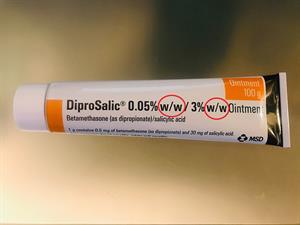PDF chapter test TRY NOW
So far, we have talked about what a solution is, what is it made up of, and what are the different types.
The majority of chemical reactions occur in the form of solutions. It is necessary to quantify the solute in the solvent to study the reactions. The term “concentration” can be used to quantify the solute in a solution.
The concentration of a solution may be defined as the amount of solute present in a given amount of solution or solvent.
However, in this section, we will look at percentages by mass % mass and percentages by volume % volume.
Mass percentage:
A solution's mass percentage is defined as the percentage by mass of the solute present in the solution. It is typically used when the solute is solid, and the solvent is liquid.
\text{Mass percentage} = \frac{\text{Mass of the solute}} {\text{Mass of the solution}} \times 100
\text{Mass percentage} = \frac{\text{Mass of the solute}} {\text{Mass of the solute + Mass of the solvent}} \times 100
For instance, 5% sugar solution (by mass) contains 5 g of sugar in 95 g of water. As a result, 100g of solution is created.
The mass percentage is commonly expressed as w/w (weight / weight); the mass percentage is temperature independent.
Volume percentage:
Volume percentage is defined as the percentage of solute (in mL) present in a given volume of solution.
\text{Volume percentage} = \frac{\text{Volume of the solute}} {\text{Volume of the solution}} \times 100
\text{Volume percentage} = \frac{\text{Volume of the solute}} {\text{Volume of the solute + Volume of the solvent}} \times 100
For example, 10% by volume of ethanol solution in water means 10 mL of ethanol in 100 mL of solution (or 90 mL of water).
Volume percentage is commonly expressed as v/v (volume / volume). In case if both the solute and the solvent are liquids, this method is used. Because of the expansion of the liquid, the volume percentage decreases with rise in temperature.
The concentration of the ingredients is expressed as v/v in commercial products that we come across in our daily lives, such as syrup solutions, mouthwash, antiseptic solutions, household disinfectants, and so on.

Ointment
Similarly, the concentration of solution in ointments, antacids, soaps, and other products is expressed as w/w.
Reference:
Cnbrb, CC BY-SA 4.0 <https://creativecommons.org/licenses/by-sa/4.0>, via Wikimedia Commons
